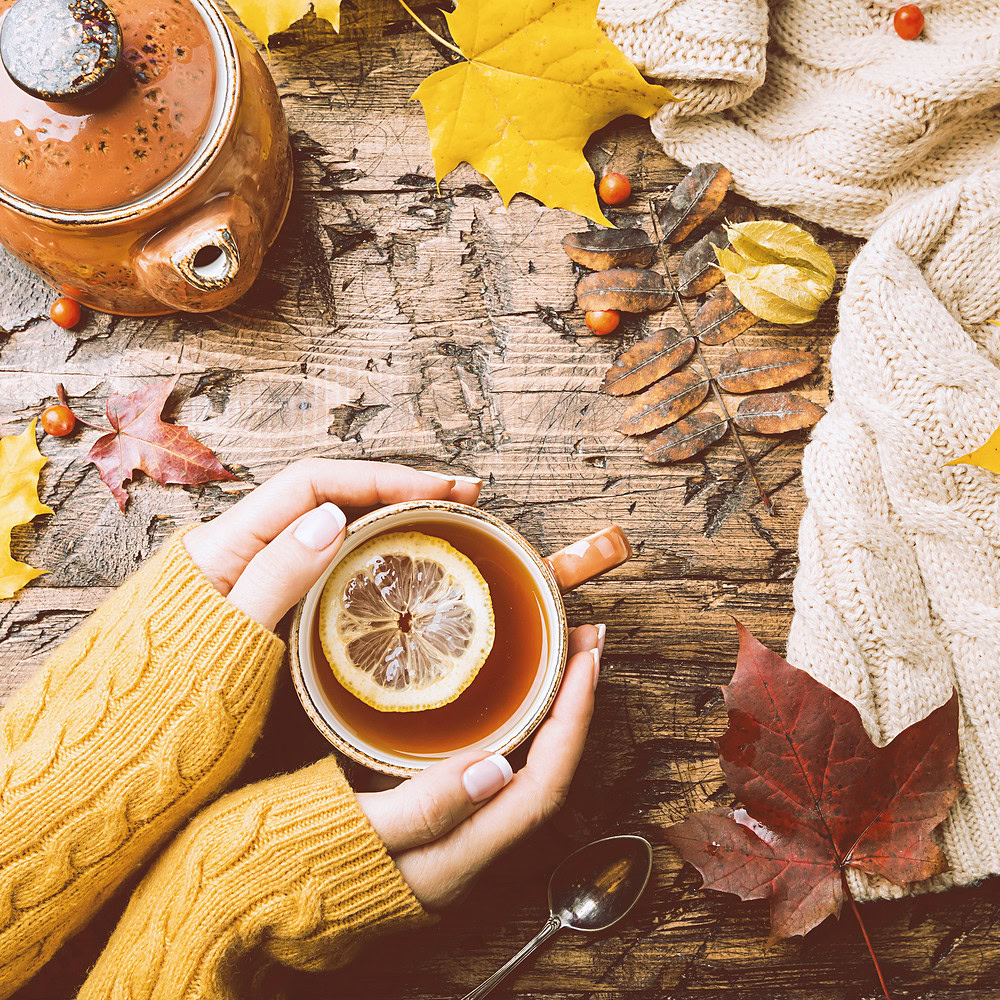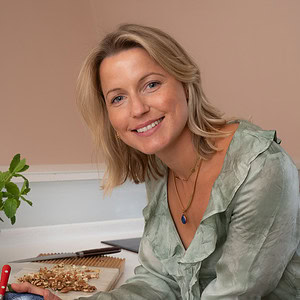‘Tis the season to restore and repair. Our wellness experts offer advice on fuelling your body, mind, and soul, this winter, writes Natalie Li.
Every winter, without fail, someone in my family catches a cold. Not exactly big news, you may be thinking.
Our obligatory fluffy blanket, affectionately named “Harold”, subsumes us as a snotty tapestry of tissues sweeps through our home.
While many creatures enter hibernation to survive the cold, dark winters, it’s our instinct as humans to retreat like bears to our own ‘caves’.
Who can blame us for seeking refuge? Reduced daylight and a drop in temperature can leave all of us, to a greater or lesser extent, feeling flat, fatigued, sluggish and craving carbs.
Hibernation mode is officially on.
Cold evenings equate to fewer walks outside. Throw in the party season, overindulgence, and we struggle to summon energy for anything – impacting our health and making us prone to colds and bugs.
So, how do we prepare and support our immune systems?
Food for thought
Evonne Ginman, a registered nutritional therapist, advises consuming a varied diet based on whole foods with a focus on foods rich in vitamins C and E, as well as zinc. Foods like citrus fruits, leafy greens, nuts, and seeds, can help support your immune system.
Ginman also strongly recommends including garlic in your winter diet. Don’t be put off by its pungent aroma – this bulbous plant contains allicin and has antimicrobial properties.
Ginger, high on Ginman’s list of recommendations, has anti-inflammatory and antioxidant effects, and can help reduce inflammation in the body and support overall immune function.
The art of mindful eating
Slowing down is a top priority for Rachel Bartholomew, registered nutritional therapist and co-author of Food for Thought: Mindful Eating to Nourish Body and Soul. Bartholomew is an advocate of mindful eating and bringing more awareness to mealtimes from choosing, preparing, cooking and anticipating food to finally chewing, eating and savouring a meal.
She explains: “For me, mindful eating is about slowing down and bringing more awareness to every part of the eating journey. There are many benefits to be gained when you slow down and approach your food in this way, not least for digestion.
“If you are rushing around and eating on the run in a stressed state, the process of digestion is unlikely to work as well, causing widespread effects on health.”
Bartholomew recommends paying close attention to how your body responds to delicious aromas filling your kitchen, particularly during the winter months which lend themselves to warm, nourishing soups and stews left slowly simmering on the hob.
“Next time you make something like this, pay attention to how your body responds to the delicious aromas that gradually fill your cooking space,” Bartholomew continues.
“You will likely notice increased saliva production in your mouth – this is a good sign that your body is starting to get ready to receive and digest your food.”
Her final tip for mindful eating is to build in a pause before picking up their knife and fork to take three deep belly breaths – counting for three on the inhale and out for four. “While this may sound simple, it can be a real challenge to put into practice, so I recommend starting slowly and doing this at just one meal a day to begin. I have found that just adding this (seemingly) simple habit to your day can be transformational,” she says.
Rachel recalls how one of her clients incorporated mindful eating to achieve her weight loss goals, later leaving her job and starting her dream business. “I have learnt that one change often leads to many more and the key is just to get started with something small.”
Shifting the sadness
One of the greatest hurdles during winter is our state of mind.
In the UK, around 3 people in every 100 have significant winter Seasonal Affective Disorder (SAD). SAD can affect individuals at any time of the year but is usually associated with winter. Common symptoms, among others, include low mood, disinterest or lack of pleasure in normal everyday activities, tearfulness, lethargy, tiredness and increased appetite.

Lack of light exposure can affect mood, and it isn’t great for our circadian rhythm, which relies on bright light exposure during the day to know the difference between day and night, says Dr Lindsay Browning, psychologist, neuroscientist, and sleep expert.
In her book Navigating Sleeplessness: How to Sleep Deeper and Better for Longer (A Mental Health Handbook), she explains that generally studies have shown that getting the right amount of sleep reduces anxiety, and depression, and lowers your risk of heart disease, stroke, dementia, obesity, certain hormonal cancers and type 2 diabetes. She also says it is “correlated with a more robust immune system”.
On Sunday 27 October 2024, the clocks go back by one hour in the UK and Browning suggests planning ahead to improve sleep. “One option is to start going to bed 20 minutes later than usual on Thursday night and set your morning alarm for 20 minutes later than usual on Friday morning,” says Browning.
“Then, on Friday night go to bed 40 minutes later than your usual bedtime and wake up 40 minutes later than your usual wake time on Saturday morning. Then, on Saturday night, go to bed one hour later, and set your wake alarm for your usual wake time Sunday morning (assuming you have a smartwatch/phone that will naturally adjust the time overnight).”
To manage SAD, Zoe Gotts, a clinical psychologist in behavioural sleep medicine, recommends her clients take a vitamin D supplement from October to March and invest in a SAD lamp to balance out the production of melatonin and serotonin. “These lamps can be used in the morning for half an hour to boost the light exposure we don’t get in the winter.”
Shorter days and less sunlight in the winter months makes getting your recommended 10 micrograms of vitamin D more difficult. Why do we need vitamin D? It’s essential for regulating calcium and phosphorus metabolism, both considered important for bone health. It is also thought that vitamin D deficiency might be associated with sub-optimal immune function and increased risk of infection.
How can you get enough vitamin D?
Ginman suggests consuming sources of vitamin D including oily fish (e.g tuna, mackerel, salmon and sardines), red meat, egg yolks, liver and some fortified foods (e.g nut milks, spreads and breakfast cereals).
Government NHS advice is that everyone should consider taking a daily vitamin D supplement during the autumn and winter.
Some people have medical conditions that mean they may not be able to safely take as much. If in doubt, you should consult your doctor. If your doctor has recommended you take a different amount of vitamin D, you should follow their advice.
Movement and mind
Nutrition is one part of the puzzle when it comes to winter wellness.
 Looming work deadlines, family gatherings and seasonal holidays can all contribute to increased stress towards the end of the year. Stress causes a rise in the hormone cortisol, which can suppress the immune system and make you more vulnerable to infection.
Looming work deadlines, family gatherings and seasonal holidays can all contribute to increased stress towards the end of the year. Stress causes a rise in the hormone cortisol, which can suppress the immune system and make you more vulnerable to infection.
Maintaining moderate exercise, like walking, pilates, or yoga, while nurturing social connections, can help to boost your mood. Easier said than done, says Maude Hirst, actor turned mindfulness coach and founder of EnergyRise. Hirst, pictured left, believes that sticking to a gentle and slower morning routine can work wonders.
“It’s all about following nature and being in nature,” she explains, “in Eastern traditions summer is about being active and autumn is about slowing down and reflecting, winter is about hibernation.
“The body and mind need to rest but we don’t seem to do that well in the Western world.”
Hirst adds: “Let your body wake up to natural daylight and let it adjust, combined with a slower morning ritual. Try to avoid jumping onto your phone first thing – that often causes anxiety.”
Breathe easy

Breathwork is another tool Hirst suggests to kickstart and use throughout your day.
“Coherent breathing, which is scientifically proven, can help to calm the nervous system. The way that you breath is the way that you feel,” she says.
“When you’re feeling anxious or stressed your breath may be short and shallow so one way to counteract that is to breathe in through the nose to the count of six and exhale through the mouth to the count of six. The great thing about this is that it’s an easy one to perform on your commute and reset your nervous system.”
“There’s lots of exciting science research going on now to suggest that the mind and body is more interlinked than we realise. Our nervous system is impacted but not only the food and liquid we digest but what we are visually taking in so that’s why movement, breathwork, yoga and meditation is so important.”
Five minutes to allow your nervous system to enter “rest and digest” mode can be achieved through meditation, suggests Hirst.
“Simply close your eyes and observe your breath. It doesn’t have to be a complicated practice. Ask yourself how you are feeling today while allowing your body to sit and feel.
“Movement, like yoga, interlinks breath, body and mind – it’s a wonderful practice in the morning or evening – perhaps try a slower form, like yin yoga. Don’t exert too much energy and reach a calming state.”
Evonne Ginman’s Winter Wellness Shot
(makes about 500ml)
Ingredients
- 1 large pineapple, topped, tailed and peeled
- 40g fresh ginger root
- 20g fresh turmeric root
- 10g fresh horseradish root
- 1 lemon
- 1 tbsp honey (preferably local honey)
- Black pepper
Method
Pass the turmeric, ginger and pineapple through a juicer. Cut the lemon in half and squeeze into the juice. Add the honey and stir well. Freshly grind a little black pepper on top. Sip throughout the day.
Enjoyed this article?
For articles and recipes subscribe to the Optimum Nutrition newsletter
Discover our courses in nutrition






